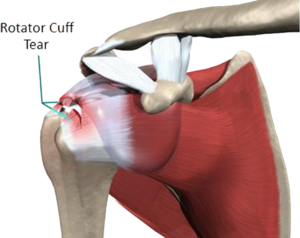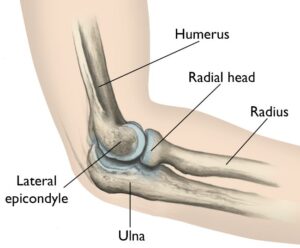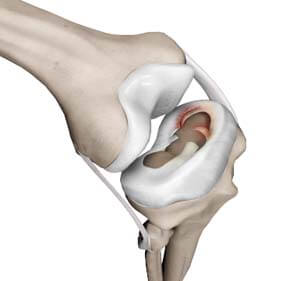Comprehensive Guide Of Sports Injuries And How To Treat Them?

Overview
What are sports injuries?
Exercise is great for your health, but people can get hurt during sports or physical activities. A sports injury means damage to your body from sports, exercise, or similar activities. Injuries can happen suddenly (acute) or develop over time (chronic).
Who might get a sports injury?
Anyone can get a sports injury, but it’s more likely for people who:
- Are not in good shape.
- Don’t use proper protective gear.
- Exercise without warming up and cooling down.
- Play contact sports with tackling or collisions.
- Do activities that involve jumping, running, or quick direction changes.
What are the most common parts of the body injured?
Sports injuries can affect any body part, but the most common areas are:
- Achilles tendon: This connects the calf to the heel and helps with walking. It can get swollen, inflamed, stiff, or even tear, leading to conditions like Achilles tendinitis or rupture.
- Ankle: The ankle, where the leg and foot join, has three joints and several bones, cartilage, ligaments, muscles, and tendons. Ankle pain often comes from a sprain.
- Elbow: The elbow links the upper arm and lower arm. Repeated motions and overuse can cause pain, such as in tennis elbow or Little League elbow.
- Head: This includes the face, skull, and brain. Concussions are a common head injury.
- Knee: The knee connects the thigh and lower leg and is made up of bones, cartilage, ligaments, and tendons. Common injuries include jumper’s knee, runner’s knee, meniscus tears, and ACL tears.
- Shoulder: The shoulder connects the upper arm to the body and includes the rotator cuff, a group of muscles and tendons. Injuries like rotator cuff tendinitis and tears are common.
What are the most common sports injuries?
There are many types of sports injuries. Some of the most common are:
- Fracture: A fracture is a break in a bone that can happen from a sudden injury (acute fracture) or repeated stress (stress fracture). Children can have growth plate fractures because their bones are still growing.
- Cartilage tear: Cartilage is a strong yet flexible tissue that cushions and protects the ends of certain bones. Cartilage injuries can happen in joints like the knee and shoulder.
- Dislocation: A dislocation occurs when bones in a joint move out of place. This often happens in contact sports like football and basketball, and in sports with high impact or a lot of stretching and falling.
- Tendinitis: Tendinitis is when a tendon, which connects muscles to bones, becomes inflamed. It usually affects the shoulder, elbow, wrist, hip, knee, or ankle and is often caused by repeating the same motion. People like carpenters, gardeners, musicians, and athletes such as golfers and tennis players are more likely to get tendinitis.
- Sprains: Sprains are stretches or tears in ligaments, which connect bones. They happen due to trauma like falls or blows that move a joint out of place. Sprains can be mild or severe and often occur in the ankle, knee, and wrist.
- Strain: A strain is a twist, pull, or tear in a muscle or tendon, which connects muscle to bone. Athletes in contact sports can get strains, but they can also happen from repeating motions, like in tennis or golf. Common strains include hamstring, back, and abdominal strains.
Symptoms & Causes of Sports Injuries
Symptoms of Sports Injuries
The symptoms of a sports injury depend on what kind of injury it is.
Symptoms of an acute injury include:
- Sudden, severe pain.
- Extreme swelling or bruising.
- You might not be able to put weight on your leg, knee, ankle, or foot.
- Difficulty moving a joint normally.
- Extreme weakness in an injured limb.
- A bone or joint that looks out of place.
Symptoms of a chronic injury due to overuse include:
- Pain when you play or exercise.
- You might also have swelling and a dull ache when you rest.
What causes sports injuries?
Sports injuries can be caused by:
- Accidents, like a fall.
- Poor exercise habits, such as not warming up or stretching enough.
- Not using proper safety equipment, or using damaged or incorrectly worn gear.
- Wearing shoes that don’t fit well or lack support can cause injuries too.
- Suddenly starting an exercise program or increasing physical activity too much for your body to handle.
Common Sports Injuries
Shoulder Injuries
- Rotator cuff injury
- Shoulder Impingement
- Instability: Shoulder instability occurs when the round end of the upper arm bone is pushed out of its shallow socket, either partially or completely. When the tendons, ligaments, and muscles of the shoulder are stretched or torn, the shoulder becomes “loose” and can dislocate repeatedly.
Elbow Injuries
- Tennis Elbow (lateral epicondylitis

- Golfer’s elbow (medial epicondylitis).
- Little league elbow: This is a growth plate injury to the elbow from repeated throwing in young people. It is most common in pitchers, but any young athlete who throws a lot can get it.The pain is on the elbow’s inner side.
Knee Injuries
- Runner’s knee.
- Fractures: Fractures can occur in any bone around the knee, but the kneecap (patella) is most commonly fractured, usually from a bad fall or a direct blow to the knee.
- Torn ligament: When the knee is over-extended or twisted, its ligaments can tear. Anterior cruciate ligament (ACL) injuries are especially common in athletes and often happen when changing direction suddenly or landing from a jump.
- Meniscal tear: The meniscal cartilage acts as a shock absorber in the knee. An awkward twist or pivot can cause a tear, which often occurs alongside a sprain or complete tear of the knee
 ligaments.
ligaments. - Tendon tear: Tendon tears are more common in middle-aged people who play sports involving running and jumping. They often happen due to a forceful landing or an awkward jump.
Diagnosis and Tests
How is a sports injury diagnosed?
To diagnose sports injuries, your healthcare provider will perform a physical exam. They’ll ask about how the injury happened and your symptoms. Depending on the type and severity of your injury, your healthcare provider might recommend following imaging tests:
- An X-ray
- CT scan or
- MRI
Can provide detailed pictures of the inside of your body. These images help your healthcare provider understand, diagnose, and treat your specific injury.
Management and Treatment
How are sports injuries treated?
Treatment for sports injuries depends on the type and how serious the injury is. Many injuries heal in a few days or weeks with rest and home care.
For more serious injuries, treatment may include:
- Immobilization with a cast, splint, sling, walking boot, or other medical device.
- Injections to reduce swelling and pain.
- Prescription anti-inflammatory medications.
- Surgery to fix fractures or repair ligament, tendon, or cartilage tears.
- Physical therapy (rehabilitation) to heal and strengthen injured areas.


 ligaments.
ligaments.





